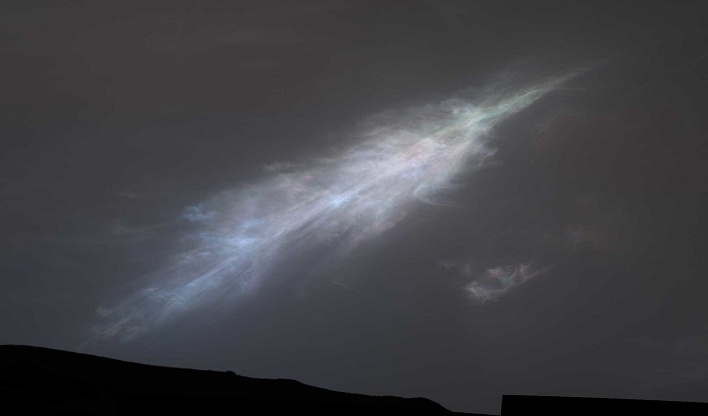NASA's Rover Captures A Clear View Of Martian Sun Rays And A Spectacular Feather Cloud

The new images are part of the rover's newest twilight cloud survey, which is a continuance of its observations in 2021 of noctilucent, or night-shining, clouds. The latest observations by Curiosity appear to have captured clouds at a higher altitude than most other clouds on Mars, which typically hover above the Martian surface at an altitude of no more than 37 miles (60 kilometers).
The 2021 cloud survey took advantage of Curiosity's black-and-white navigation cameras. The new survey, however, is more dependent upon the rover's Mast camera, or Mastcam, which captures color images. This survey began in January of this year and is expected to end in mid-March.
Scientists are hopeful that by studying these differences in the clouds hovering above the Martian surface in more detail, they can learn more about the atmosphere's composition, temperatures, and winds within the clouds of the Red Planet.
Along with the image that showed sun rays, Curiosity also captured "a set of colorful clouds shaped like a feather on Jan. 27." NASA said that as these clouds are illuminated by sunlight, these types of clouds can "create a rainbowlike display called iridescence."
Curiosity spotted iridescent nacreous (Mother of Pearl) clouds previously in the 2021 observations. The image above was captured on March 5, 2021, the 3,048th Martian day, or sol, of the mission. The image is composed of five images stitched together using the rover's Mastcam.
"Where we see iridescence, it means a cloud's particle sizes are identical to their neighbors in each part of the cloud," explained Mark Lemmon, an atmospheric scientist with the Space Science Institute in Boulder, Colorado. He continued, "By looking at color transitions, we're seeing particle size changing across the cloud. That tells us about the way the cloud is evolving and how its particles are changing size over time."



